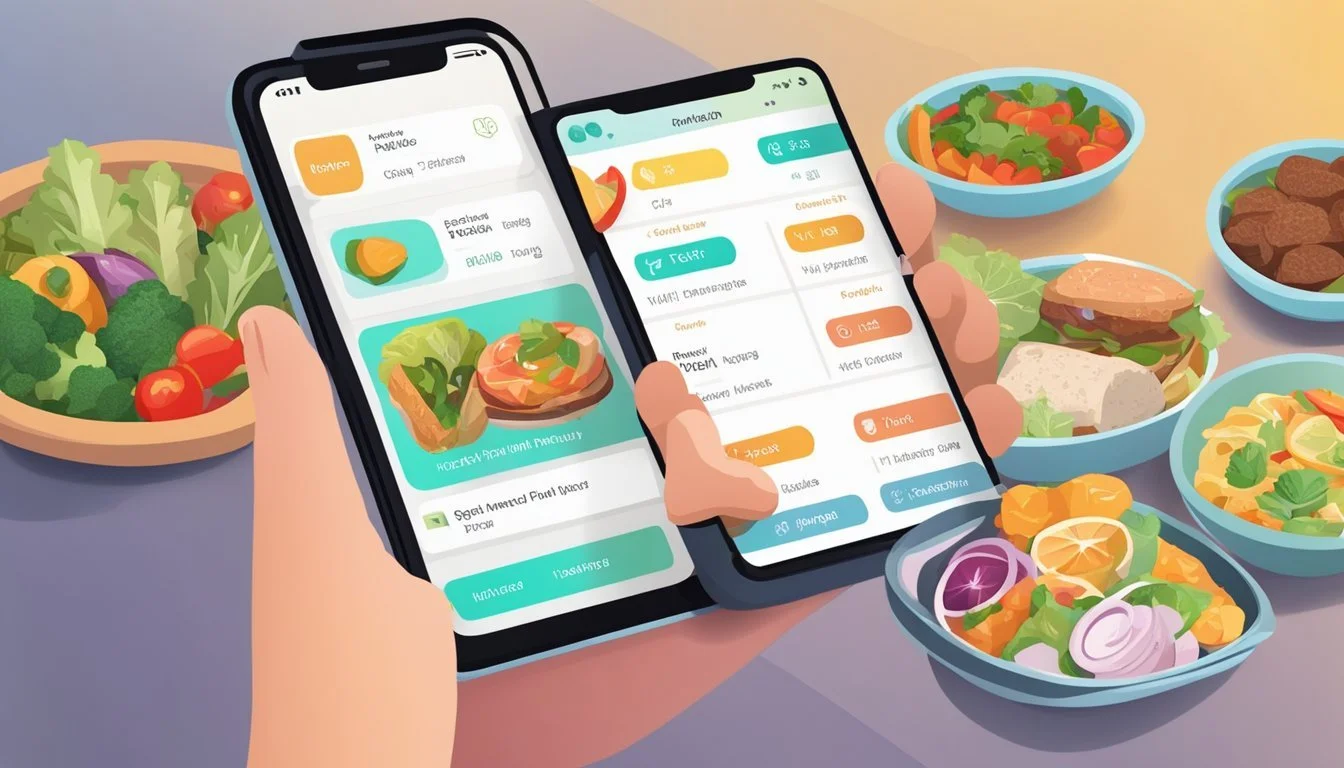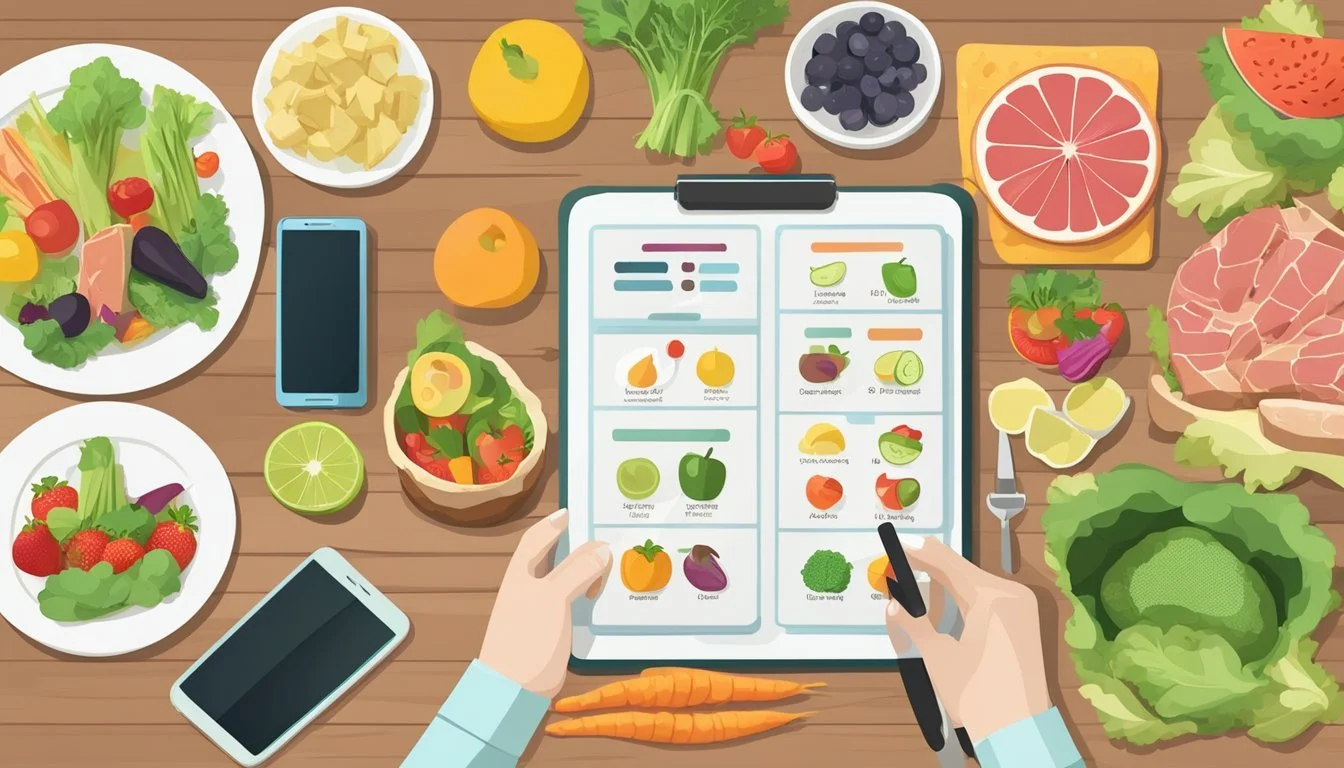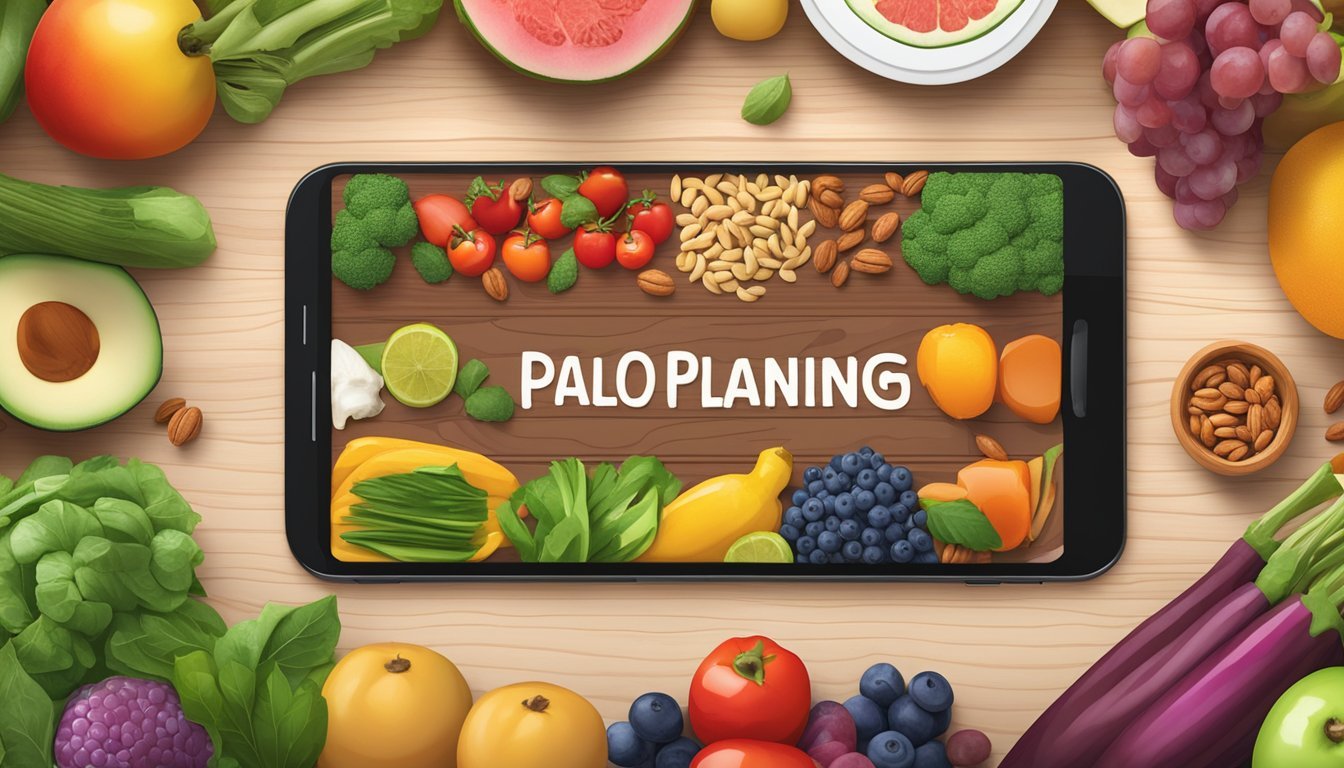The Best Paleo Diet Apps for Meal Planning
Top Picks for Healthy Living
The Paleo diet, based on the types of foods presumed to have been eaten by early humans, emphasizes whole foods such as meat, fish, vegetables, and fruit while avoiding processed foods and grains. This approach to nutrition can be challenging to adopt without proper guidance, particularly when it comes to meal planning. Selecting the appropriate apps can streamline the process, offering curated meal plans, grocery lists, and a palette of recipes that fit within the paleo framework.
Users seeking simplicity in meal planning might find apps like the Paleo Diet Plan beneficial, as it caters to beginners with a seven-day meal plan to kick-start their journey. These applications typically provide categorised recipes, making it easy to navigate through options for breakfast, side dishes, and snacks, designed to align with the paleo methodology.
Additional features in paleo diet apps, such as interactive guides and customizable shopping lists, support users in maintaining their dietary choices. For those more seasoned in the paleo lifestyle, sophisticated apps offer the ability to adjust meal plans, substitute ingredients, and track nutritional information to ensure daily dietary goals are met. Whether one is starting on the paleo path or looking to maintain their routine, the right app can be a critical tool in fostering a healthy and sustainable eating habit.
Understanding the Paleo Diet
The Paleo Diet emphasizes whole, unprocessed foods similar to what early humans may have eaten. This section will examine its foundations, benefits and challenges, and important dietary considerations.
Fundamentals of Paleo
The Paleo Diet encourages the consumption of meat, poultry, seafood, fruits, vegetables, nuts, and seeds. It posits that by eating foods that are more in line with those of our ancestors, individuals can improve their health and nutrition. Foods such as legumes, grains, dairy, and sugar, which became commonly eaten after the advent of agriculture, are excluded because the diet suggests that the human body has not yet adapted to process these food groups efficiently.
Benefits and Challenges
Adopters of the Paleo Diet often report benefits like weight loss, better control of blood glucose levels, and improved heart health because of a diet rich in lean proteins and fiber from fruits and vegetables. Yet, individuals may encounter challenges such as the need for careful meal planning, higher grocery costs due to the emphasis on organic produce and grass-fed meats, and a lack of variety in their meal plans, which can make the diet difficult to sustain long-term.
Dietary Restrictions and Considerations
Understanding and adhering to Paleo dietary restrictions is crucial. The diet is naturally gluten-free and excludes dairy, which can be beneficial for those with related sensitivities or allergies. It also discourages consumption of processed foods and added sugars, aligning with general nutritional advice for a healthy lifestyle. However, those who follow the diet must ensure they're meeting their dietary needs, particularly regarding nutrients typically found in grains and legumes, which are not part of the Paleo Diet.
By focusing on fresh, unprocessed, and nutrient-dense foods, the Paleo Diet aims to provide a dietary framework that may support modern health needs while drawing on ancient dietary wisdom.
Choosing the Right Paleo Meal Planning App
Selecting a suitable paleo meal planning app requires focusing on key features, examining popular options, and ensuring cross-platform compatibility to accommodate dietary needs efficiently.
Key Features to Look For
When evaluating paleo meal planning apps, individuals should prioritize nutritional information, barcode scanners, calorie trackers, and shopping lists. These core functionalities enhance the meal planning process by providing essential dietary tracking and convenient grocery shopping solutions.
Nutritional Information: Essential for tailoring a paleo plan to one's specific needs.
Barcode Scanner: Streamlines the tracking of foods and supplements.
Calorie Tracker: Helps maintain energy balance.
Shopping List: Simplifies the procurement of paleo-friendly ingredients.
Comparing Top Paleo Diet Apps
To make an informed decision among leading apps such as Eat This Much, Paleo.io, Nom Nom Paleo, and MyFitnessPal, individuals should compare how each app addresses the paleo diet's nuanced requirements.
App Meal Plans Recipes Food Tracking Community Support
Eat This Much Yes Limited Yes Yes
Paleo.io No Yes No No
Nom Nom Paleo Yes Yes No No
MyFitnessPal Yes Yes Yes Yes
Each app's approach to meal plans, recipes, and fitness integration can vary significantly, thus affecting the user's overall experience and success with the diet.
Cross-Platform Availability
Apps with Android and iPhone compatibility, like Eat This Much and MyFitnessPal, offer users the convenience of accessing meal plans and tracking progress on multiple devices. This is crucial for maintaining consistency in food tracking and diet adherence no matter where the user is or what device they're using.
Eat This Much: Available on both platforms, offering a complete meal planning experience.
MyFitnessPal: Syncs across devices and integrates exercise tracking with diet management.
Creating Your Paleo Meal Plans
Creating Paleo meal plans requires a focus on fresh ingredients and avoiding processed foods. A well-structured meal plan caters to the Paleo philosophy while ensuring nutritional balance throughout the day.
Designing a Weekly Meal Structure
When designing a weekly meal structure, individuals should aim for consistency with breakfast, lunch, dinner, and snacks to provide energy stability. A typical plan could involve starting the day with a high-protein breakfast, a midday meal rich in vegetables and lean meats, and a dinner featuring healthy fats and proteins. Snacks might include nuts or fresh fruit. A strategic approach includes:
Breakfast: eggs with spinach and avocado.
Lunch: grilled chicken salad with mixed greens.
Dinner: baked salmon with asparagus.
Snacks: sliced carrots with almond butter.
Incorporating Variety and Balance
Balance is key in a Paleo meal plan, as is a variety to prevent dietary boredom. Meals should contain a mix of protein, healthy fats, and carbohydrates mainly from vegetables and fruits. A sample day might include:
Breakfast: a smoothie with coconut milk and mixed berries.
Lunch: a hearty beef and vegetable stew.
Dinner: stir-fried shrimp with broccoli and bell peppers.
Dessert: a baked apple with cinnamon (occasional treat).
Adapting Recipes to Paleo
Many traditional recipes can be adapted to fit a Paleo diet plan. Substitutions play a pivotal role in this, such as replacing grains with cauliflower rice or spiralized vegetables. A Paleo recipe collection should have a diverse range of easy-to-make dishes like:
Tea: Herbal teas are generally acceptable.
Cooking: Use coconut oil or ghee for high-heat cooking.
Recipe Customization: Alter ingredients in favorite dishes to align with Paleo guidelines.
Shopping for Paleo
When embarking on a Paleo diet, the key to success often lies in meticulous shopping and preparing a well-thought-out grocery list. It's essential to identify high-quality, whole foods that are not only fresh but also offer the most nutritional value.
Building a Paleo-Friendly Shopping List
For those following the Paleo lifestyle, creating a grocery list is the first step toward a successful meal plan. The list should prioritize organic and fresh produce, lean proteins, and healthy fats. Apps can assist in building shopping lists that are tailored to Paleo guidelines, often featuring customizable templates. Users may also find value in apps with barcode scanners that quickly determine if an item is Paleo-compliant.
Essentials for the Paleo Pantry:
Lean meats and poultry
Fish and seafood
Fresh fruits and vegetables
Nuts and seeds (except peanuts)
Healthy oils (olive, coconut)
Finding Quality Ingredients
Quality matters and apps can be instrumental in locating stores that specialize in high-quality and organic ingredients. An app that provides location-based recommendations for where to find the freshest produce or grass-fed meats can be invaluable, enhancing the convenience and value of shopping for a Paleo eater.
Features to consider in an app:
Location-based store recommendations
Seasonal produce guide
Organic and non-GMO filters
Decoding Labels and Marketing
Understanding labels is crucial in the Paleo diet. Shoppers should look for apps that offer detailed nutritional information and educational resources to dissect tricky food labels. The right app can help cut through marketing jargon to ensure products are genuinely Paleo-friendly, focusing on ingredients and processing methods rather than just the packaging claims.
Decoding Tips:
Look beyond "gluten-free" and "natural" labels; verify the ingredient list.
Check for added sugars, soy, or artificial additives that are not Paleo-compliant.
Use apps with label-reading guides and training features.
Integrating Paleo Diet Apps with Lifestyle
Successfully integrating Paleo diet apps into one's lifestyle involves smart planning around diet, exercise, sleep routines, and social engagements. Picking the right tool eases the management of dietary preferences, especially when balancing nutrition, navigating social situations like eating out, and seeking support from the Paleo community.
Balancing Diet, Exercise, and Sleep
Diet: Paleo diet apps make it straightforward for users to monitor their caloric intake and maintain balanced nutrition that aligns with Paleo principles. Many apps include features that help plan meals with optimal portions of proteins, fats, and carbohydrates, taking into account an individual's weight loss goals and dietary restrictions.
Exercise: The apps often come with functionalities for tracking workouts and water consumption, ensuring that users can balance their food intake with their exercise routines. They encourage regular physical activity as a core part of the Paleo lifestyle, offering suggestions for exercises that complement the diet.
Sleep: Some apps provide guidance for improving sleep quality, which is a crucial aspect of a holistic Paleo lifestyle. The connection between diet, exercise, and sleep is essential for overall health, and Paleo apps can serve as a daily lifestyle companion for users to manage these elements effectively.
Using Apps for Eating Out and Travel
When it comes to eating out and travel, Paleo diet apps are valuable resources. They can suggest Paleo-friendly restaurants or menu items that cater to users with allergies and dietary restrictions. Apps may also offer features for tracking meals on-the-go, helping users make informed decisions about their food choices when away from home.
Connecting with the Paleo Community
Engagement with the wider Paleo community is facilitated by diet apps through social media integration and in-app forums. Users can seek community support, exchange recipes, and share their experiences with others who are committed to the Paleo lifestyle. This social aspect provides motivation and educational resources, allowing individuals to learn from nutritionists and experienced Paleo followers.
Advancing Your Culinary Skills
Applying advanced features in meal planning apps can revolutionize the way one cooks Paleo recipes. These tools facilitate a deeper understanding of cooking techniques, recipe adjustment, and beautiful presentation.
Exploring Advanced Recipe Features
With apps such as Paprika Recipe Manager 3, users can not only save their favorite recipes but also manipulate them to fit their dietary needs. For instance, the app allows importing recipes and syncing them across devices, making the recipe collection management seamless and customizable. Those focusing on Paleo can curate a selection of gluten-free, meat, poultry, and seafood recipes that adhere to their dietary restrictions.
Import Feature: Users can upload their own Paleo creations.
Customization: Modify existing recipes to personal preference.
Database: Extensive collection aids in expanding culinary repertoire.
Cooking Techniques and Paleo Substitutions
Meal planning apps equip cooks with extensive knowledge of Paleo cooking methods. Apps such as Paleo Leap offer guidance on recipes and how to execute complex techniques, ensuring that meals are not only fresh and compliant but also flavorful. Substituting common ingredients for Paleo-approved items without losing taste or texture is streamlined, which is pivotal when cooking caveman feast meals devoid of processed foods.
Technique Tutorials: Step-by-step instructions for Paleo preparations.
Substitution Lists: Comprehensive guides for gluten-free alternatives.
Presentation and Plating
First impressions are crucial, and a well-presented dish enhances the dining experience. Users can find inspiration from apps providing plating tips and presentation ideas. A beautifully arranged plate of vibrant vegetables and perfectly cooked seafood can turn an ordinary meal into a feast for the senses. These apps encourage users to see their dishes through a creative lens, promoting an aesthetic that complements the natural appeal of Paleo ingredients.
Visual Guides: In-app visuals to inspire plating creativity.
Plating Techniques: Simple yet effective methods to improve the visual appeal of Paleo dishes.
Analytics and Progress Tracking
Seamless monitoring and precise evaluation of dietary metrics are integral for individuals following the Paleo diet. Assessing food intake, nutritional value, and goal progression allows for a tailored dietary plan, conducive to specific health objectives such as weight loss, managing diabetes, or adhering to dietary restrictions.
Monitoring Food Intake
Users can efficiently log their daily food intake with Paleo diet apps, ensuring they stay within the dietary guidelines of the Paleo philosophy. These apps often sync with devices like Fitbit to offer a holistic view of one's activity and food consumption. By tracking meals, users can stay accountable and adjust their eating habits as needed, considering their unique dietary needs, including allergies or artificial sweetener intake.
Evaluating Nutritional Metrics
An effective Paleo app breaks down ingested food into essential macronutrients, allowing users to monitor their caloric intake, as well as the intake of proteins, fats, and carbohydrates. This information is vital, especially for users with diabetes or those targeting weight loss, as it helps them maintain a balance conducive to their health goals.
Setting and Achieving Goals
Through setting personalized dietary goals, users can focus on specific objectives such as reducing processed food or increasing the consumption of fermented foods. The app's analytics tools allow them to track progress towards these targets. Users may also define and track macros or caloric goals to align with their broader dietary needs and restrictions. The apps cater to a range of goals, from simple meal planning to comprehensive lifestyle changes.
Special Considerations for Paleo Dieters
Adopting the Paleo Diet involves making informed choices to align with pre-agricultural, whole-food dietary principles. For Paleo dieters, navigating food allergies, weight management, and integrating other dietary preferences requires careful planning and consideration.
Dealing with Food Allergies and Sensitivities
Paleo dieters with food allergies or sensitivities need to be vigilant. The Paleo Diet naturally eliminates most common allergens such as dairy and grains, but careful scrutiny of ingredient labels is essential. Apps specializing in paleo meal planning can offer filtering options to exclude certain allergens, providing tailored meal suggestions and ensuring all dietary requirements are met without compromising on nutrition.
Common Allergens Paleo Alternatives
Dairy Nut-based milks and cheeses
Grains Cauliflower rice, almond flour
Legumes Seeds and nuts
Soy Coconut aminos, other sauces
Paleo Diet for Weight Loss and Fitness
Weight loss and fitness goals may be supported by a Paleo Diet through its focus on lean proteins, vegetables, and fruits. Dieters aiming to lose weight or enhance their fitness may find apps with meal planning particularly useful, especially when they include features for tracking nutritional information such as calorie counts and macronutrient profiles. It is crucial for one to tailor their paleo meal plans not only for weight loss but also to support muscle recovery and performance if they are active.
Tracking Tools: To manage weight, look for apps with features to monitor food intake and exercise.
Lean Meats: Opt for grass-fed meats and omega-3-rich fish to align with fitness and dietary goals.
Navigating Paleo with Other Dietary Preferences
Individuals may choose to combine the Paleo Diet with other dietary preferences or restrictions such as vegan, low-carb, or keto diets. This hybrid approach can be complicated due to differing principles between diets. Paleo diet apps can offer educational content to help dieters understand the compatibility and adjustments needed to align with their dietary needs. Dieters with diabetes or other health considerations should seek apps that offer comprehensive nutritional information to maintain blood sugar levels and meet their unique dietary requirements.
Fusion Approaches: Apps can help merge paleo principles with vegan or keto guidelines, for example, by highlighting appropriate food swaps.
Ingredient Focus: The emphasis on whole foods in paleo serves the needs of various diets focusing on the importance of understanding each ingredient's role.
Resources and Further Learning
Exploring the Paleo diet is an ongoing journey that benefits from numerous resources designed to educate and guide enthusiasts. From comprehensive books to dynamic online communities, individuals have access to a wealth of information to support their meal planning and dietary adjustments.
Books and Guides
For those seeking structured education on the Paleo diet, there are several reference books and guides that offer in-depth knowledge:
"The Paleo List": A definitive guide outlining which foods are Paleo-friendly.
"Nom Nom Paleo": A resource that provides inspiration for meal planning with interactive guides and customizable shopping lists.
Educational Content: Books like "Paleo for Beginners" serve as an introductory course to understanding the diet's principles.
Online Communities and Forums
Community support plays a vital role in maintaining a Paleo lifestyle:
Paleo Leap and Paleo.io: Offer support through forums where members can exchange recipes, tips, and experiences.
Online Platforms: Social media groups and subreddits dedicated to Paleo provide a space for real-time interaction and advice.
Expert Advice and Coaching
For personalized guidance, individuals can turn to professional coaching:
Expert Nutritionists: Specialists in the Paleo diet often provide tailored coaching to help adapt meal plans to individual needs.
Paleo Diet Apps: These applications include "Is It Paleo?" features and meal suggestions by dieticians, assisting with informed food choices.
Utilizing these resources can significantly enhance one's understanding and application of the Paleo diet principles, supporting a successful and informed transition to this way of eating.
Conclusion
Selecting the right app for meal planning on the paleo diet can significantly influence one's health and lifestyle. They provide structured guidelines and a diverse collection of recipes that cater to the nutritional philosophy of the paleo approach. Users can navigate their dietary choices with confidence through these tools, streamlining the process of adopting a paleo lifestyle.
Features to look for in a Paleo Diet App:
A wide array of paleo recipes for various meal categories
Meal plans that simplify weekly grocery shopping and preparation
Shopping lists that adjust to your meal plan
Educational resources that explain the fundamentals of the paleo diet
Apps like Paleo Diet Plan, Paleo Leap, and others mentioned in this article offer an excellent starting point. The convenience of a digital platform allows for personalization and flexibility, adapting to the user's pace and preferences. This technology aids in maintaining a health-focused mindset and supports achieving nutritional goals.
It is essential for individuals to evaluate their specific needs and preferences when choosing a paleo diet app. The right app should balance user-friendliness with comprehensive features, ensuring that users can seamlessly integrate paleo meal planning into their daily regime.
By leveraging these digital aids, individuals can enhance their adherence to the paleo diet, resulting in potential health benefits and a more disciplined approach to eating. The apps stand as a testament to how modern technology can support traditional dietary practices, merging ancestral wisdom with the convenience of the digital age.









